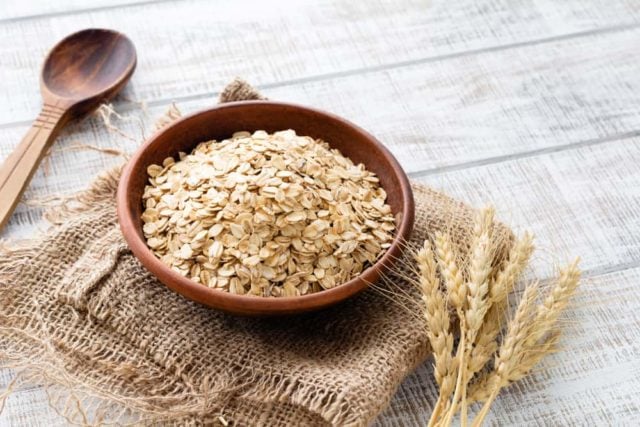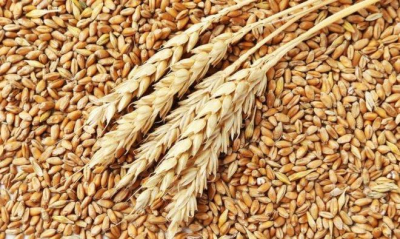What Is Whole Wheat?

Want to reduce your risk of premature death from all kinds of diseases by 15 percent, by just making one small change to your diet? Start eating whole wheat.
Perhaps, some additional information about what whole wheat is and what it is for the body can be of some help. Here are some facts about whole wheat.
Whole wheat is a whole grain

Grains are the seeds and fruits of cereal crops, such as wheat, rye (rye), rice, oats, buckwheat (buckwheat), brown or brown rice, and barley which have been human staples for thousands of years.
This grain group includes plants that are efficient at converting sunlight, fertilizer, water, and oxygen into macronutrients. The end result is long-lasting seeds, and they can be stored for a long time.
In pre-industrial times, this grain was usually eaten whole (whole wheat). However, technological advances in milling and processing of raw materials mean that these grains must undergo large-scale separation processes.
The process includes flattening, breaking, puffing, or fine milling. All of them can remove the part of the skin or bran attached to the seed, which is precisely the most nutritious part of the seed.
The result of this process is wheat flour products or white flour that you usually find in supermarkets or nearby stalls. The product consists only of starch.
White flour products (such as white bread, white rice, white pasta, noodles, breakfast cereals, snack foods, and biscuits) are considered refined grain.
In the process of making flour, more than half of the vitamin B complex (B1, B2, B3), vitamin E, folic acid, calcium, phosphorus, zinc, copper, iron, and fiber are lost.
A whole wheat can only be called whole wheat if the seeds still have:
- germ (the inside of the seed containing the good fatty acids),
- endosperm (middle layer, aka seed body, which is enriched by carbohydrates and protein, and then covered by skin), or
- bran (outer layer with lots of fiber, vitamins, and minerals).
Whole grain can be a food on its own such as oatmeal, brown rice, jam, or popcorn. It is also used as a food support ingredient such as whole wheat flour in labeled breads and cereals “Whole grain”.
Nutritional content in whole grains
The American Heart Association recommends eating six to eight servings of whole grain foods, especially whole wheat versions, per day. Whole wheat is important for the body for a number of reasons. Check out the benefits of whole grains below.
1. Nutritious content of fiber
Wheat is rich in fiber, which is concentrated in the bran, while refined wheat flour contains almost no fiber. Whole grain fiber content ranges from 12 – 15% of the total dry weight.
The high fiber content in wheat makes whole grains also more filling. This is partly because you have to chew the grains harder, so it will take you longer to eat them.
That means your stomach has more of a chance to tell your brain that you are full, which can help reduce the risk of overeating.
The most common fiber found in wheat bran is arabinoxylan (70%), which is a type of hemicellulose. The rest consists mostly of cellulose and beta-glucan. All these types of fiber are insoluble fiber.
Insoluble fiber passes through the digestive system almost intact, some of them also feed the friendly bacteria in the intestines, which leads to increased stool weight.
Due to the high fiber content, eating whole grains helps to make your bowel movements more regular. Eating a diet high in insoluble fiber can also help women avoid gallstones.
The above benefits of fiber are the reasons why a diet that emphasizes whole grains can help people maintain a healthy weight.
Low fiber intake has been linked to a number of diseases such as constipation (constipation), hemorrhoids (hemorrhoids), appendicitis, diverticulitis, polyps, and cancer.
2. The content of essential vitamins and minerals
One of the important minerals in whole wheat is magnesium. Magnesium is used by more than 300 enzymes in the human body, including the enzymes involved in the use of glucose in and secretion of insulin. Magnesium is also important for heart, brain and bone health.
Whole grains are absorbed slowly by the body and then gradually metabolized, while processed wheat flour is absorbed by the body rapidly, causing insulin and blood sugar spikes.
This factor is the reason why regular consumption of whole grains also reduces the risk of type 2 diabetes.
Whole grains can also benefit your eye health.
The low glycemic index of whole grains can help reduce the risk of age-related macular degeneration, which is the leading cause of severe vision loss in people over the age of 60.
In addition, the vitamin E, zinc and niacin found in whole grains can also help improve overall eye health.
Risks of eating whole wheat

Often times, processed foods (such as wheat flour, wheat flour, or fortified wheat cereals) are fortified with folic acid, while whole wheat bread is not.
When switching to whole grains, you may experience folic acid and B vitamin deficiencies. Be sure to check the nutritional value information labels on product packaging to make sure these foods contain folic acid.
On the other hand, oats contain small amounts of soluble fiber (fructan) which can cause digestive problems in people with irritable bowel syndrome (IBS). However, in people with a high tolerance for soluble fiber, this effect does not occur.
Wheat is also quite high in protein, especially in the form of gluten and lectins. Gluten may have side effects in people with celiac disease or a sensitivity or allergy to gluten.
Meanwhile, lectins can cause flatulence. Consuming whole nuts and seeds in their raw form can cause nausea, vomiting, and diarrhea. This indigestion occurs because lectins can damage the lining of the intestine.
In people with Crohn’s disease or irritable bowel syndrome (IBS), the lining of the intestinal wall becomes more sensitive to the lectins in the food source, which can correlate with intestinal leakage.
However, the lectin compounds in whole wheat will become inactive when exposed to heat, and become nil when the whole wheat has been processed or roasted.
The effects of dietary lectins exist only as long as they are in the body, and the effects can be mitigated by consuming a variety of fruits, vegetables (instead of one type continuously), and foods with good bacteria (eg, yogurt).
Hello Health Group does not provide medical advice, diagnosis or treatment.
Kaushik, S., Wang, JJ, Flood, V., Tan, JS, Barclay, AW, Wong, TY, Brand-Miller, J., & Mitchell, P. (2008). Dietary glycemic index and the risk of age-related macular degeneration. The American journal of clinical nutrition, 88(4), 1104–1110. https://doi.org/10.1093/ajcn/88.4.1104.
Whole Grains – Harvard TH Chan School of Public Health. Hsph.harvard.edu. (2021). Retrieved 18 March 2021, from https://www.hsph.harvard.edu/nutritionsource/what-should-you-eat/whole-grains/.
Whole grains – The European Food Information Council. Eufic.org. (2015). Retrieved 18 March 2021, from https://www.eufic.org/en/whats-in-food/article/whole-grains-updated-2015.
Whole Grains, Refined Grains, and Dietary Fiber – American Heart Association. Heart.org. (2021). Retrieved 18 March 2021, from https://www.heart.org/en/healthy-living/healthy-eating/eat-smart/nutrition-basics/whole-grains-refined-grains-and-dietary-fiber#.V5 -fA7grJhE.